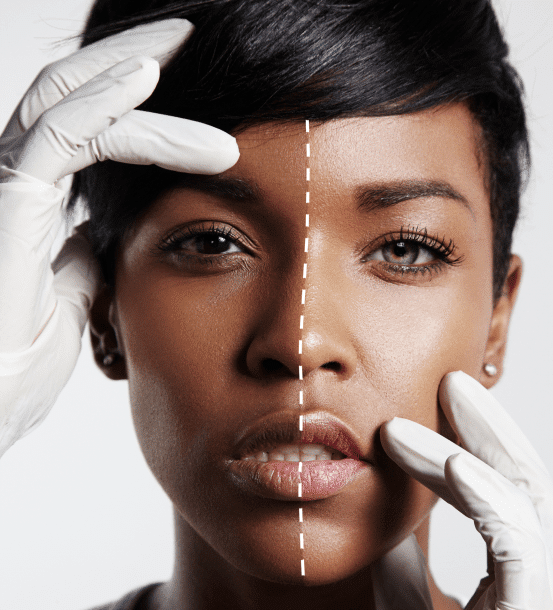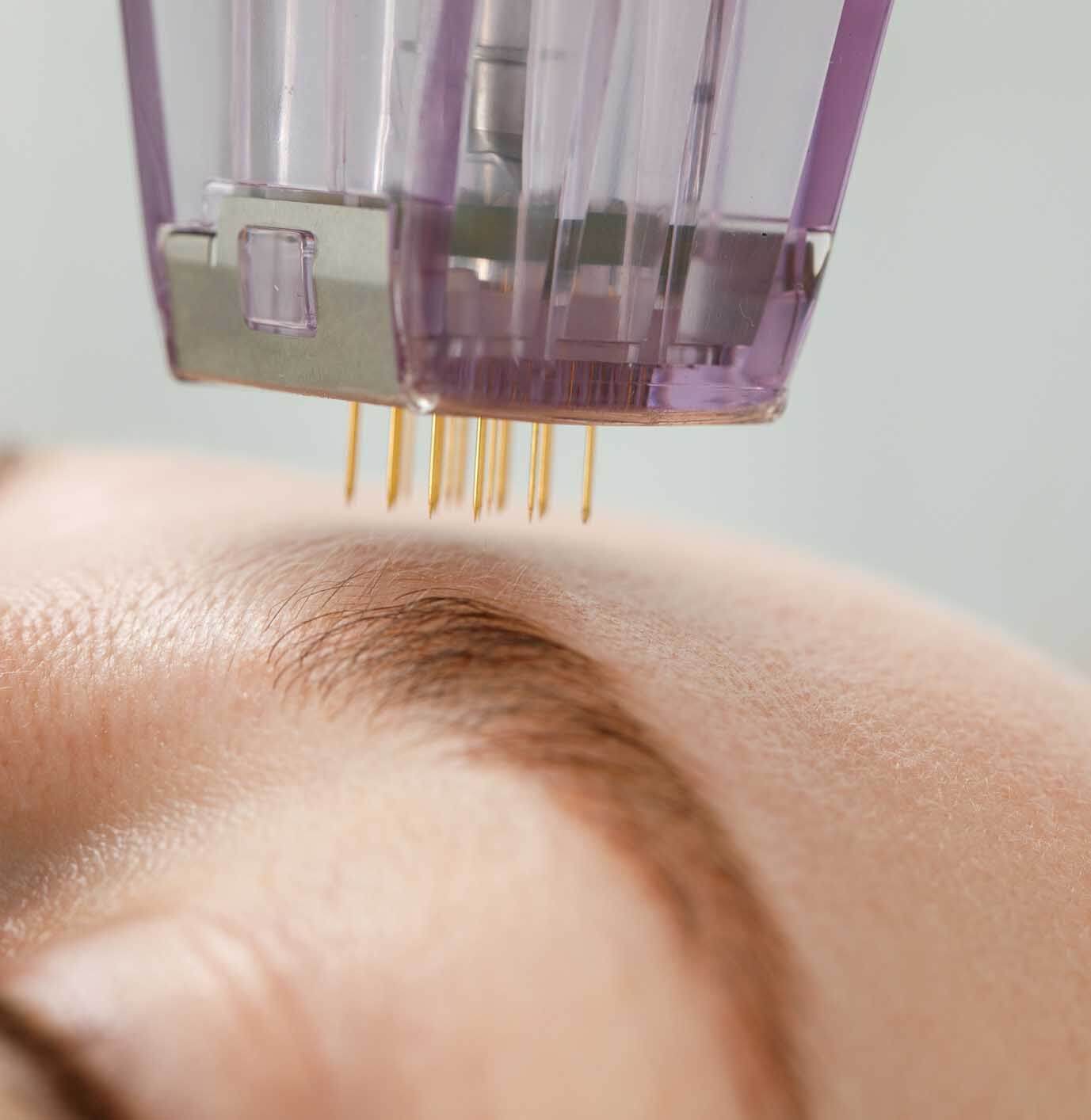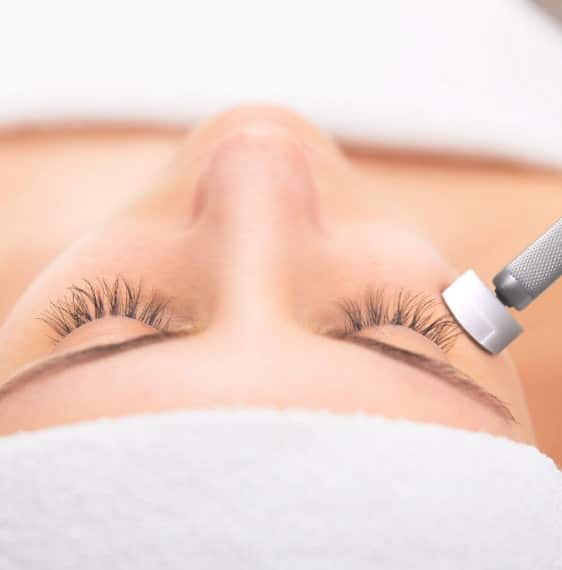Dermaplaning
Dermaplaning is a procedure that exfoliates your skin and gets rid of dirt and vellus hair, better known as “peach fuzz.” Exfoliation and hair removal can leave your skin brighter and smoother. The treatment may soften fine lines and wrinkles and ease hyperpigmentation or uneven skin tone.
For enhanced results, chemical peel, and microneedling treatments can be combined with dermaplaning to improve skin texture and appearance further.
Book your appointment with us today and experience the benefits of this painless procedure.

Is Dermaplaning Right For You?
Dermaplaning can be done on all skin types, making it versatile. However, it is most suitable for those with the following:
No active
acne
Sun-damaged
skin
Fine
lines
Benefits of Dermaplaning
If you’re looking for a quick and easy way to revamp your skin, dermaplaning is the right choice. It offers benefits including:

Improves skin texture

Removes dead skin cells

Helps reduce blemishes
Pricing and
Details

Pricing and
Details
You can add on dermaplaning to any facial, peel, microneedling or microchanneling service for $50.
How Often
Should You Get
Dermaplaning?

Generally speaking, it is recommended that you get dermaplaning treatments every 3-4 weeks for the best results. However, your skin type and other factors may require more frequent or less frequent treatments.

Book Your Consultation
Schedule a consultation today if you’re interested in learning more about Dermaplaning or other aesthetic treatments.
You May Also Be Interested in

Chemical Peels

Microneedling

Microchanneling
FAQ's
Dermaplaning is typically not painful. The procedure involves using a scalpel to gently scrape off dead skin cells and fine hair from the skin’s surface. Most people describe the sensation as a light scraping or tickling feeling. However, individual sensitivity may vary, and some may experience mild discomfort during the procedure.
Depending on the treatment areas, a dermaplaning session usually takes 30 minutes to an hour. This gentle exfoliation procedure involves using a surgical scalpel to remove the top layer of dead skin cells and vellus hair. It makes your skin smoother and brighter, with no downtime necessary. For best results, scheduling a session every 3 to 4 weeks is recommended.
Dermaplaning is generally safe and suitable for all skin types, including sensitive skin, as it removes dead skin cells and peach fuzz. However, individuals with active acne, rosacea, or other skin conditions should consult a dermatologist or aesthetician before treatment. It is important to note that proper technique and sanitation are necessary to avoid potential complications.
Dermaplaning is a non-invasive skincare procedure that does not require any downtime. However, some patients may experience mild redness or sensitivity in the treated area for a few hours after the procedure. Avoiding sun exposure and applying sunscreen to protect your skin after the treatment is also essential. You can resume your regular activities immediately after the procedure, and many patients choose to schedule dermaplaning during their lunch break or before social events.
Some patients may experience mild and temporary side effects such as redness, sensitivity, or peeling in the treated area. These symptoms usually subside within a few hours to a day after the treatment. In rare cases, patients may experience infection, scarring, or hyperpigmentation, but these are usually the result of improper technique or inadequate post-treatment care.
It’s essential to choose an experienced and licensed skin care professional for your dermaplaning treatment and follow their post-treatment instructions carefully. Suppose you have any concerns about the procedure or potential side effects. In that case, our skincare experts at IVI Aesthetics & Wellness Chicago, IL, can answer your questions and provide personalized skincare advice.
No, hair does not grow back thicker after dermaplaning. The procedure removes vellus hair, the fine, thin hair commonly known as “peach fuzz.” The regrowth of hair following dermaplaning is the same texture and thickness as before the treatment.
The results of dermaplaning can last for about three to four weeks. This timeframe is due to the natural skin cell turnover process, which means new skin cells will eventually replace the exfoliated skin. To maintain the results, it is recommended to undergo dermaplaning treatments every four to six weeks or as advised by a skincare professional.
Yes, dermaplaning is an effective way to achieve glowing and radiant skin. During the treatment, the top layer of dead skin cells is gently exfoliated, revealing smoother, softer, and brighter skin underneath. Dermaplaning can also help to remove vellus hair or “peach fuzz,” which can trap dirt and oil, creating a dull complexion. Removing this hair will make the makeup application smoother and more flawless. The treatment can also stimulate collagen production, improving skin elasticity and firmness, leading to a youthful and healthy appearance. Many patients notice an immediate improvement in their skin’s texture and radiance after just one dermaplaning treatment.

